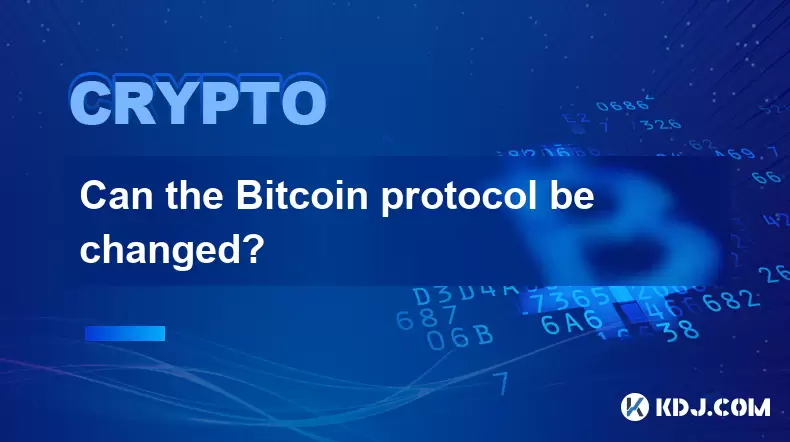-
 bitcoin
bitcoin $122090.672462 USD
1.59% -
 ethereum
ethereum $4493.758974 USD
0.56% -
 xrp
xrp $3.033145 USD
0.65% -
 tether
tether $1.000629 USD
0.00% -
 bnb
bnb $1169.854250 USD
7.07% -
 solana
solana $230.954786 USD
-0.19% -
 usd-coin
usd-coin $0.999785 USD
0.00% -
 dogecoin
dogecoin $0.256108 USD
-1.12% -
 tron
tron $0.342333 USD
-0.12% -
 cardano
cardano $0.859632 USD
-0.10% -
 hyperliquid
hyperliquid $48.932146 USD
-2.25% -
 chainlink
chainlink $22.345466 USD
-1.29% -
 ethena-usde
ethena-usde $1.000217 USD
-0.03% -
 avalanche
avalanche $31.203456 USD
1.93% -
 sui
sui $3.579145 USD
1.05%
What is the environmental impact of Bitcoin mining, and is it a serious concern?
Bitcoin mining consumes 120–150 TWh annually, comparable to medium-sized nations, raising concerns over carbon emissions and e-waste.
Aug 04, 2025 at 02:14 am

Understanding the Energy Consumption of Bitcoin Mining
Bitcoin mining relies on a proof-of-work (PoW) consensus mechanism, which requires miners to solve complex cryptographic puzzles to validate transactions and secure the blockchain. This process demands significant computational power, which in turn consumes large amounts of electricity. The hash rate, or the total combined computational power used to mine and process transactions, has grown substantially since Bitcoin’s inception. As of recent data, the Bitcoin network consumes approximately 120 to 150 terawatt-hours (TWh) per year, a figure comparable to the annual electricity usage of medium-sized countries such as Argentina or the Netherlands.
The energy-intensive nature of mining stems from specialized hardware known as ASICs (Application-Specific Integrated Circuits). These machines are designed solely for mining and operate continuously, generating heat and requiring cooling systems. The constant operation of these devices across global mining farms contributes heavily to electricity demand. The geographic distribution of mining operations plays a critical role in determining the environmental footprint. In regions where electricity is generated primarily from coal or other fossil fuels, the carbon emissions associated with Bitcoin mining are significantly higher.
Carbon Emissions and Fossil Fuel Dependence
A major environmental concern tied to Bitcoin mining is its carbon footprint. When mining operations are powered by coal-based electricity, the resulting CO₂ emissions can be substantial. Studies have shown that in certain periods, especially when mining migrated to regions like Kazakhstan and parts of China with coal-heavy energy grids, the carbon intensity of Bitcoin mining increased dramatically. The Cambridge Bitcoin Electricity Consumption Index (CBECI) estimates that the annual carbon emissions from Bitcoin mining could exceed 60 million metric tons of CO₂, depending on the energy mix.
The reliance on fossil fuels is not uniform across all mining regions. Some operations are located in areas with surplus hydroelectric, geothermal, or wind power, which reduces their environmental impact. For example, miners in Iceland and Norway benefit from nearly 100% renewable energy sources, making their operations far more sustainable. However, the lack of transparency in reporting energy sources makes it difficult to assess the true global average. The absence of mandatory disclosure requirements for mining farms means that the overall carbon footprint remains partially obscured.
Electronic Waste Generated by Mining Hardware
Another often-overlooked environmental issue is the electronic waste (e-waste) produced by Bitcoin mining. ASIC miners have a relatively short lifespan—typically 1.5 to 3 years—due to rapid technological advancements and increasing difficulty levels in mining. As newer, more efficient models are released, older units become obsolete and are discarded. These devices are not easily repurposed, as they are designed specifically for mining and lack general computing functionality.
Estimates suggest that Bitcoin mining generates over 30,000 metric tons of e-waste annually, comparable to the small IT equipment waste of a country like the Netherlands. This waste includes circuit boards, power supplies, and cooling components, many of which contain hazardous materials like lead and mercury. Without proper recycling infrastructure, these materials can leach into soil and water systems. The concentration of mining hardware in large-scale farms exacerbates the issue, as entire facilities may be decommissioned and replaced within a few years, leading to bulk disposal.
Renewable Energy Integration and Sustainable Mining Efforts
Despite the environmental challenges, there are growing efforts to align Bitcoin mining with sustainable energy practices. Some mining companies are strategically locating operations near renewable energy sources to take advantage of low-cost, clean power. For instance, hydroelectric plants in Sichuan, China, and geothermal sites in Kenya have hosted mining facilities during periods of energy surplus. In Texas, miners participate in grid-balancing programs by reducing operations during peak demand, effectively acting as a flexible load that supports grid stability.
Several mining firms have committed to 100% renewable energy usage through public pledges and third-party audits. The Bitcoin Mining Council, a voluntary industry group, promotes transparency in energy consumption and advocates for cleaner practices. Additionally, innovations such as flared gas recovery allow miners to utilize otherwise wasted natural gas from oil fields. By deploying mobile mining containers at remote oil sites, companies convert flared gas into electricity, reducing methane emissions and generating revenue from otherwise discarded resources.
Regulatory and Geographic Shifts Influencing Environmental Impact
Government policies and regulatory frameworks significantly influence the environmental footprint of Bitcoin mining. After China banned cryptocurrency mining in 2021, a large portion of the global hash rate migrated to countries like the United States, Kazakhstan, and Russia. The energy mix of these destination countries directly affects the carbon intensity of mining. In the U.S., states like Texas and Kentucky offer cheap electricity, but the grid still relies on a mix of natural gas, coal, and renewables.
Local regulations can either encourage or discourage sustainable mining. Some jurisdictions offer tax incentives for using renewable energy, while others impose carbon taxes or energy usage limits on data centers, including mining farms. The European Union has discussed including proof-of-work cryptocurrencies in its taxonomy of environmentally harmful activities, which could lead to stricter oversight. Meanwhile, countries with abundant hydroelectric or solar resources are positioning themselves as green mining hubs, aiming to attract investment while minimizing ecological damage.
Common Misconceptions and Data Interpretation
There is ongoing debate about whether Bitcoin’s energy use is justified relative to its utility. Critics argue that the network consumes energy without producing tangible goods, while proponents highlight its role in decentralized finance, censorship-resistant transactions, and digital scarcity. Comparisons are often made to traditional financial systems, which also consume significant energy through data centers, ATMs, and physical infrastructure. However, these comparisons are complex due to differences in scope and transparency.
Another misconception is that all Bitcoin mining is inherently dirty. In reality, the proportion of renewable energy in mining is estimated to range from 30% to 60%, depending on the study and time period. Seasonal variations, such as increased hydroelectric availability during rainy months, can temporarily shift the energy mix toward cleaner sources. The dynamic nature of mining geography means that the environmental impact is not static and can improve with policy changes and technological adoption.
Frequently Asked Questions
Can Bitcoin mining use 100% renewable energy?Yes, it is technically possible for Bitcoin mining to operate on 100% renewable energy. Several mining operations already do so by locating near hydroelectric dams, wind farms, or solar installations. The key challenge lies in scalability and consistent energy supply, as renewables can be intermittent. Energy storage solutions and grid integration are essential for maintaining continuous mining operations using only clean power.
How does Bitcoin mining affect local power grids?Bitcoin mining can both strain and support local power grids. In areas with limited infrastructure, sudden increases in mining activity may lead to blackouts or grid instability. Conversely, in regions with excess capacity, mining can provide a stable demand for electricity, helping to monetize surplus energy. Some utilities in Texas use mining as a demand-response tool, turning miners off during high-demand periods to prevent overloads.
Are there alternatives to proof-of-work that reduce environmental impact?Yes, proof-of-stake (PoS) is a consensus mechanism that drastically reduces energy consumption by eliminating the need for competitive mining. Ethereum’s transition to PoS in 2022 reduced its energy use by over 99%. While Bitcoin is unlikely to adopt PoS due to philosophical and security considerations, other cryptocurrencies use PoS or hybrid models to achieve sustainability.
Do miners have incentives to use green energy?Miners are primarily driven by profitability, and renewable energy often offers lower operating costs. In regions with abundant sunlight or wind, electricity prices are cheaper, making green-powered mining more competitive. Additionally, increasing pressure from investors, regulators, and consumers encourages mining firms to adopt sustainable practices to improve public perception and comply with future regulations.
Disclaimer:info@kdj.com
The information provided is not trading advice. kdj.com does not assume any responsibility for any investments made based on the information provided in this article. Cryptocurrencies are highly volatile and it is highly recommended that you invest with caution after thorough research!
If you believe that the content used on this website infringes your copyright, please contact us immediately (info@kdj.com) and we will delete it promptly.
- BlockDAG, DOGE, HYPE Sponsorship: Crypto Trends Shaping 2025
- 2025-10-01 00:25:13
- Deutsche Börse and Circle: A StableCoin Adoption Powerhouse in Europe
- 2025-10-01 00:25:13
- BlockDAG's Presale Buzz: Is It the Crypto to Watch in October 2025?
- 2025-10-01 00:30:13
- Bitcoin, Crypto, and IQ: When Genius Meets Digital Gold?
- 2025-10-01 00:30:13
- Stablecoins, American Innovation, and Wallet Tokens: The Next Frontier
- 2025-10-01 00:35:12
- NBU, Coins, and Crypto in Ukraine: A New Yorker's Take
- 2025-10-01 00:45:14
Related knowledge

Why is Bitcoin considered a revolutionary technology?
Aug 12,2025 at 08:29pm
Decentralization and the Elimination of Central AuthoritiesThe core innovation behind Bitcoin lies in its decentralized architecture, which fundamenta...

Why is Bitcoin considered a revolutionary technology?
Aug 10,2025 at 07:42pm
Decentralized Architecture and Trustless TransactionsBitcoin is considered revolutionary because it introduced a decentralized architecture that opera...

What are the key features of Bitcoin?
Aug 10,2025 at 02:50am
Decentralization and Peer-to-Peer NetworkOne of the most defining characteristics of Bitcoin is its decentralized nature. Unlike traditional financial...

Can the Bitcoin protocol be changed?
Aug 07,2025 at 01:16pm
Understanding the Bitcoin ProtocolThe Bitcoin protocol is the foundational set of rules that govern how the Bitcoin network operates. It defines every...

Can the Bitcoin protocol be changed?
Aug 11,2025 at 01:01am
Understanding the Bitcoin Protocol StructureThe Bitcoin protocol is the foundational set of rules that govern how the Bitcoin network operates. These ...

What happens to Bitcoin transactions once they are confirmed?
Aug 09,2025 at 05:22am
Understanding Bitcoin Transaction ConfirmationWhen a Bitcoin transaction is initiated, it is broadcast to the network and placed in a pool of unconfir...

Why is Bitcoin considered a revolutionary technology?
Aug 12,2025 at 08:29pm
Decentralization and the Elimination of Central AuthoritiesThe core innovation behind Bitcoin lies in its decentralized architecture, which fundamenta...

Why is Bitcoin considered a revolutionary technology?
Aug 10,2025 at 07:42pm
Decentralized Architecture and Trustless TransactionsBitcoin is considered revolutionary because it introduced a decentralized architecture that opera...

What are the key features of Bitcoin?
Aug 10,2025 at 02:50am
Decentralization and Peer-to-Peer NetworkOne of the most defining characteristics of Bitcoin is its decentralized nature. Unlike traditional financial...

Can the Bitcoin protocol be changed?
Aug 07,2025 at 01:16pm
Understanding the Bitcoin ProtocolThe Bitcoin protocol is the foundational set of rules that govern how the Bitcoin network operates. It defines every...

Can the Bitcoin protocol be changed?
Aug 11,2025 at 01:01am
Understanding the Bitcoin Protocol StructureThe Bitcoin protocol is the foundational set of rules that govern how the Bitcoin network operates. These ...

What happens to Bitcoin transactions once they are confirmed?
Aug 09,2025 at 05:22am
Understanding Bitcoin Transaction ConfirmationWhen a Bitcoin transaction is initiated, it is broadcast to the network and placed in a pool of unconfir...
See all articles










































































